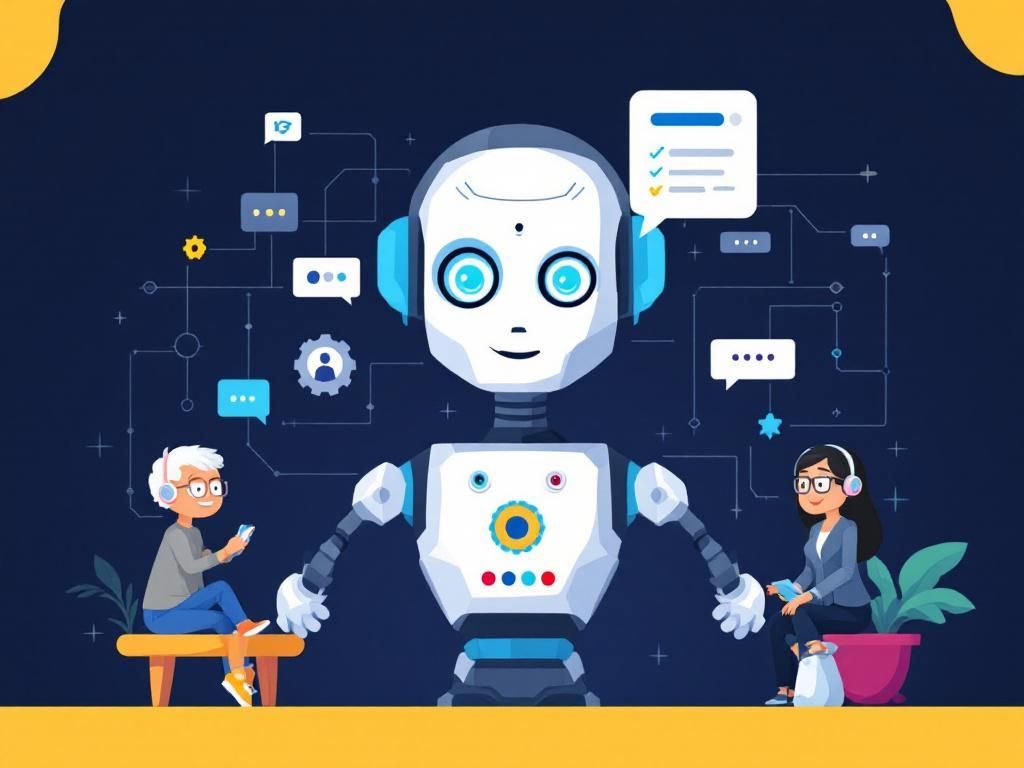In the ever-evolving field of computer vision, object detection has emerged as a critical capability that enables machines to interpret and understand the visual world. With the rise of Vision APIs, developers and businesses alike are finding new ways to integrate sophisticated object detection functionalities into their applications. As we look ahead to 2025 and beyond, it is essential to explore the advancements in Vision APIs that make unlocking object detection easier and more accessible.
Understanding Object Detection
Object detection is a computer vision technique that involves identifying and locating objects within images or video streams. This technology has a wide range of applications, from autonomous vehicles to retail analytics, and is powered by machine learning models that can analyze visual data with remarkable accuracy.
How Object Detection Works
At its core, object detection combines two primary tasks:
- Classification: Determining the category of an object within an image.
- Localization: Identifying the position of the object using bounding boxes.
The process typically involves the following steps:
- Data Collection: Gathering a diverse dataset that represents the objects of interest.
- Model Training: Using machine learning algorithms to train a model on the collected data.
- Real-time Processing: Implementing the trained model in applications for live object detection.
The Role of Vision APIs in Object Detection
Vision APIs simplify the integration of object detection capabilities into applications by providing pre-trained models and easy-to-use interfaces. These APIs allow developers to perform complex visual recognition tasks without needing extensive knowledge of machine learning.
Key Features of Vision APIs
Modern Vision APIs come equipped with a variety of features, including:
| Feature | Description |
|---|---|
| Pre-trained Models | Access to models trained on large datasets, enabling immediate use for various object detection tasks. |
| Real-time Processing | Fast image processing capabilities that can handle video streams and images on-the-fly. |
| Multi-platform Support | APIs designed to work across several programming languages and platforms. |
| Scalability | Ability to scale the service based on usage requirements, making it suitable for both small apps and large systems. |
Top Vision APIs for Object Detection in 2025
As we approach 2025, several Vision APIs stand out for their robustness and user-friendly features. Here’s a closer look at some of the leading options:
1. Google Cloud Vision API
Google’s offering utilizes deep learning to detect over 70 categories of objects. Key advantages include:
- Label and landmark detection.
- OCR capabilities for text recognition.
- Integration with other Google Cloud services.
2. Amazon Rekognition
Amazon’s tool is particularly designed for scalability and accuracy. Features include:
- Facial analysis and recognition.
- Celebrity recognition and moderation.
- Integration with AWS services for enhanced functionality.
3. Microsoft Azure Computer Vision
Microsoft’s Azure service offers features tailored to enterprise applications, such as:
- Spatial analysis for understanding environments.
- Custom vision model training for specific use cases.
- Video indexing capabilities for analyzing video content.
Implementing Object Detection with Vision APIs
Integrating object detection capabilities into an application using Vision APIs is typically straightforward. Here’s a step-by-step guide to get you started:
Step 1: Choose Your API
Select a Vision API based on your project’s requirements. Consider factors such as supported features, pricing, and ease of use.
Step 2: Set Up an Account
Create an account on the chosen platform and obtain the necessary API keys for authentication.
Step 3: Build Your Application
Utilize the API documentation to learn how to implement object detection in your application. Most APIs provide SDKs and code samples.
Step 4: Test and Iterate
After implementation, perform thorough testing to ensure accuracy and performance. Iterate based on user feedback and performance metrics.
Challenges in Object Detection
While Vision APIs make it easier to implement object detection, various challenges may still arise:
1. Accuracy and Reliability
Though pre-trained models can perform well, they may not always deliver high accuracy for specific use cases. Custom training may be necessary.
2. Data Privacy Concerns
Using cloud-based Vision APIs raises data privacy issues, particularly in industries like healthcare. Ensuring compliance with regulations is vital.
3. Real-time Processing Limitations
For applications requiring real-time processing, latency can be a concern. Selecting an API that offers efficient processing is essential.
The Future of Object Detection
Looking ahead to 2025, the future of object detection seems promising. We can expect:
- Enhanced accuracy through advances in AI and machine learning algorithms.
- Greater accessibility with improved Vision APIs and toolkits.
- Integration with IoT devices for smarter systems.
As businesses continue to leverage object detection technology, it will play a pivotal role in the growth of smart applications across various sectors.
FAQ
What are Vision APIs and how do they enhance object detection?
Vision APIs are cloud-based services that utilize machine learning to analyze and interpret visual data, significantly improving object detection accuracy and speed.
How can I integrate Vision APIs for object detection in my application?
You can integrate Vision APIs by using the provided SDKs or HTTP endpoints, allowing you to send images and receive detailed analysis, including object identification and localization.
What types of objects can be detected using Vision APIs?
Vision APIs can detect a wide range of objects, including people, animals, vehicles, and everyday items, depending on the specific capabilities of the API used.
Are there any limitations to using Vision APIs for object detection?
While Vision APIs are powerful, limitations may include dependency on internet connectivity, potential latency issues, and the need for high-quality images for optimal performance.
How does the accuracy of object detection improve with advancements in Vision APIs?
Advancements in machine learning algorithms and training datasets enhance the accuracy of object detection in Vision APIs, allowing for better recognition and classification of objects.
What industries can benefit from using object detection with Vision APIs?
Industries such as retail, automotive, healthcare, and security can greatly benefit from object detection with Vision APIs for applications like inventory management, autonomous driving, and surveillance.




